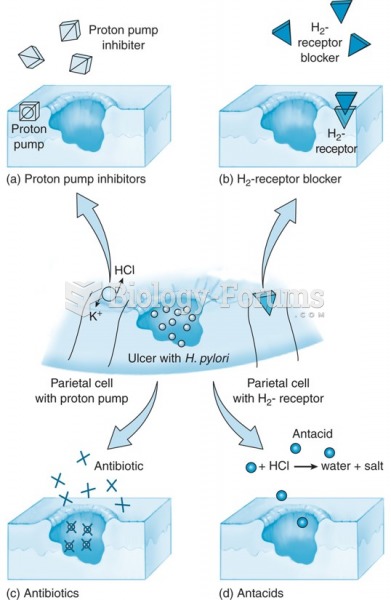|
|
|
Medication errors are three times higher among children and infants than with adults.
Between 1999 and 2012, American adults with high total cholesterol decreased from 18.3% to 12.9%
When blood is deoxygenated and flowing back to the heart through the veins, it is dark reddish-blue in color. Blood in the arteries that is oxygenated and flowing out to the body is bright red. Whereas arterial blood comes out in spurts, venous blood flows.
In the ancient and medieval periods, dysentery killed about ? of all babies before they reach 12 months of age. The disease was transferred through contaminated drinking water, because there was no way to adequately dispose of sewage, which contaminated the water.
Adult head lice are gray, about ? inch long, and often have a tiny dot on their backs. A female can lay between 50 and 150 eggs within the several weeks that she is alive. They feed on human blood.
 Mechanism of action of neuromuscular blockers: (a) Depolarizing neuromuscular blocker occupies Ach ...
Mechanism of action of neuromuscular blockers: (a) Depolarizing neuromuscular blocker occupies Ach ...
 Drug tolerance: A shift in the dose-response curve to the right as a result of exposure to the drug.
Drug tolerance: A shift in the dose-response curve to the right as a result of exposure to the drug.





